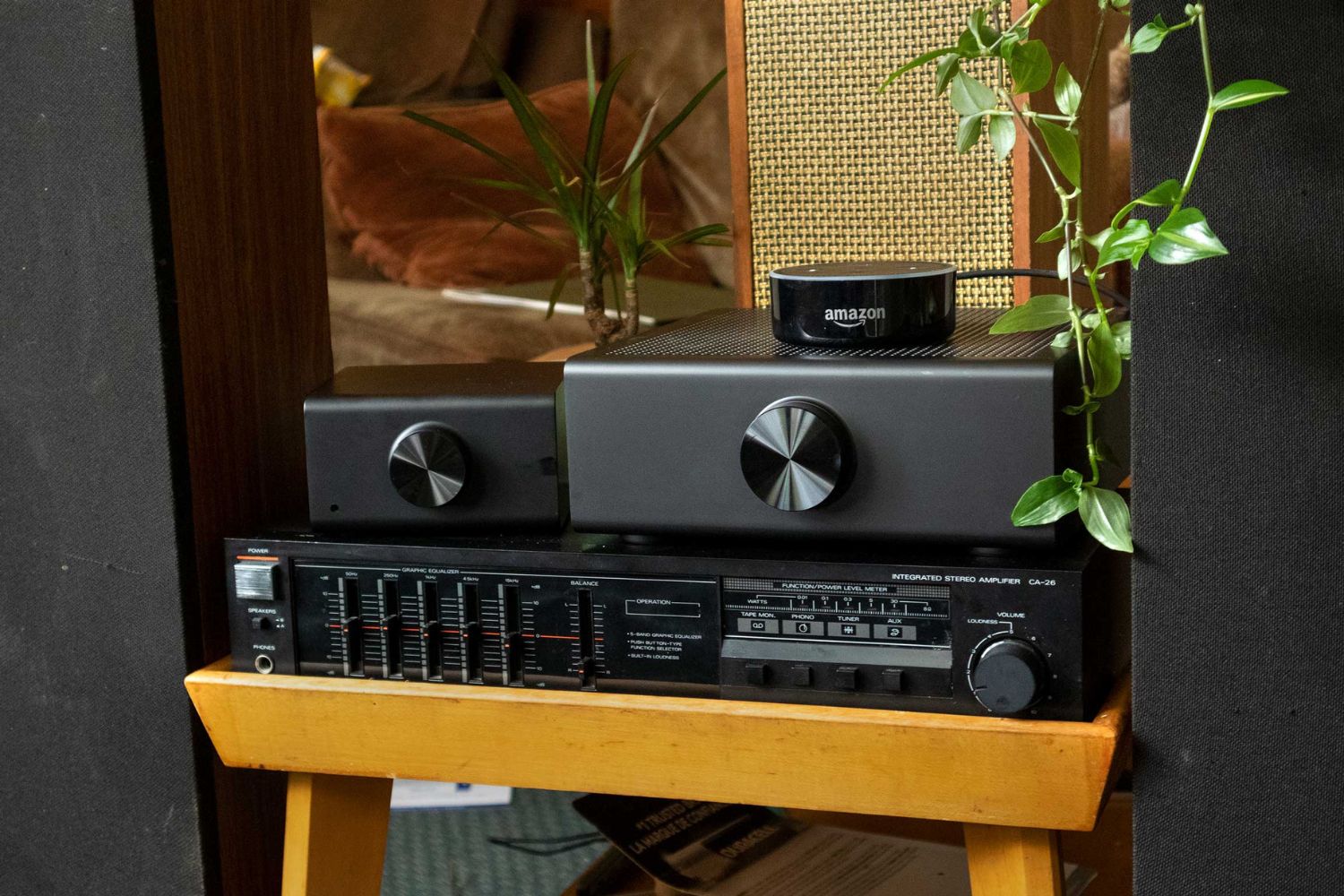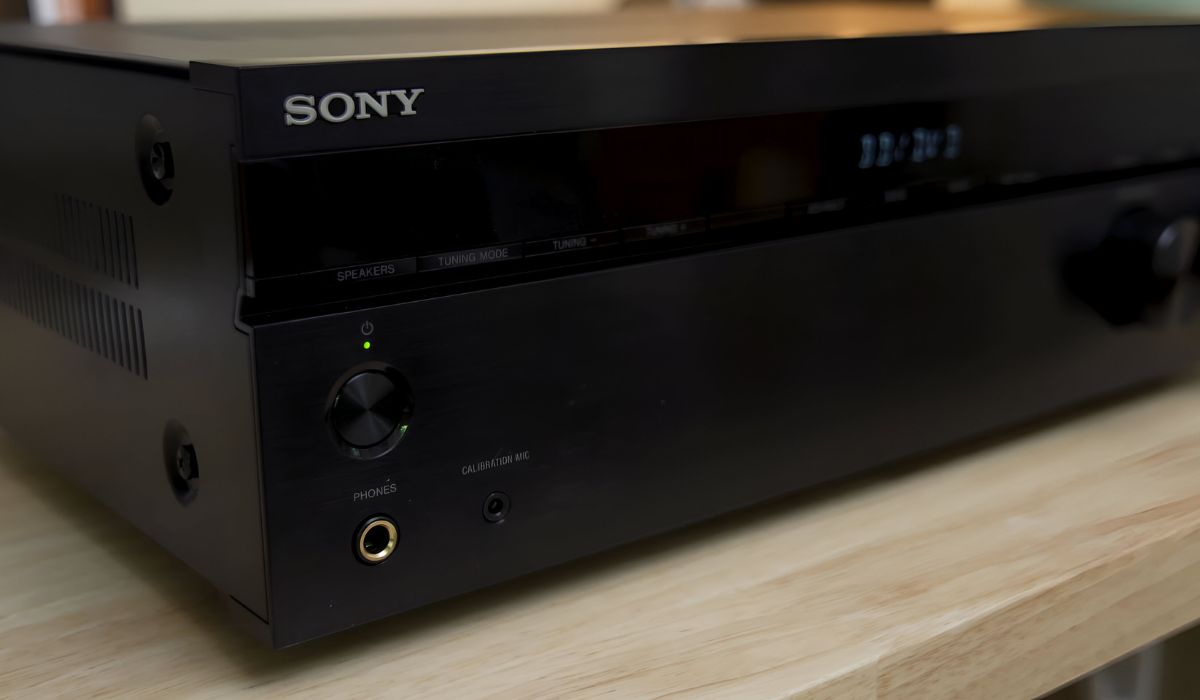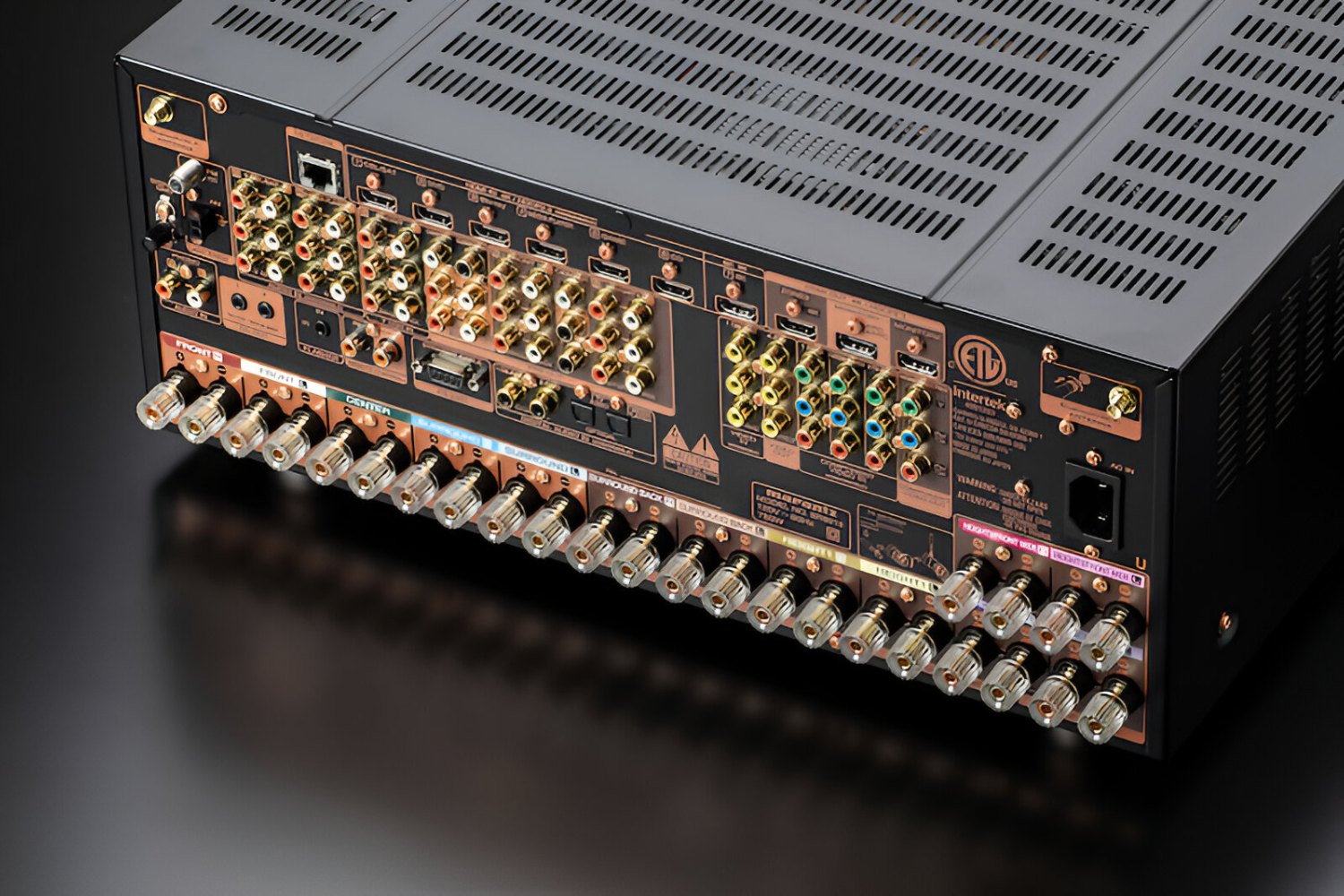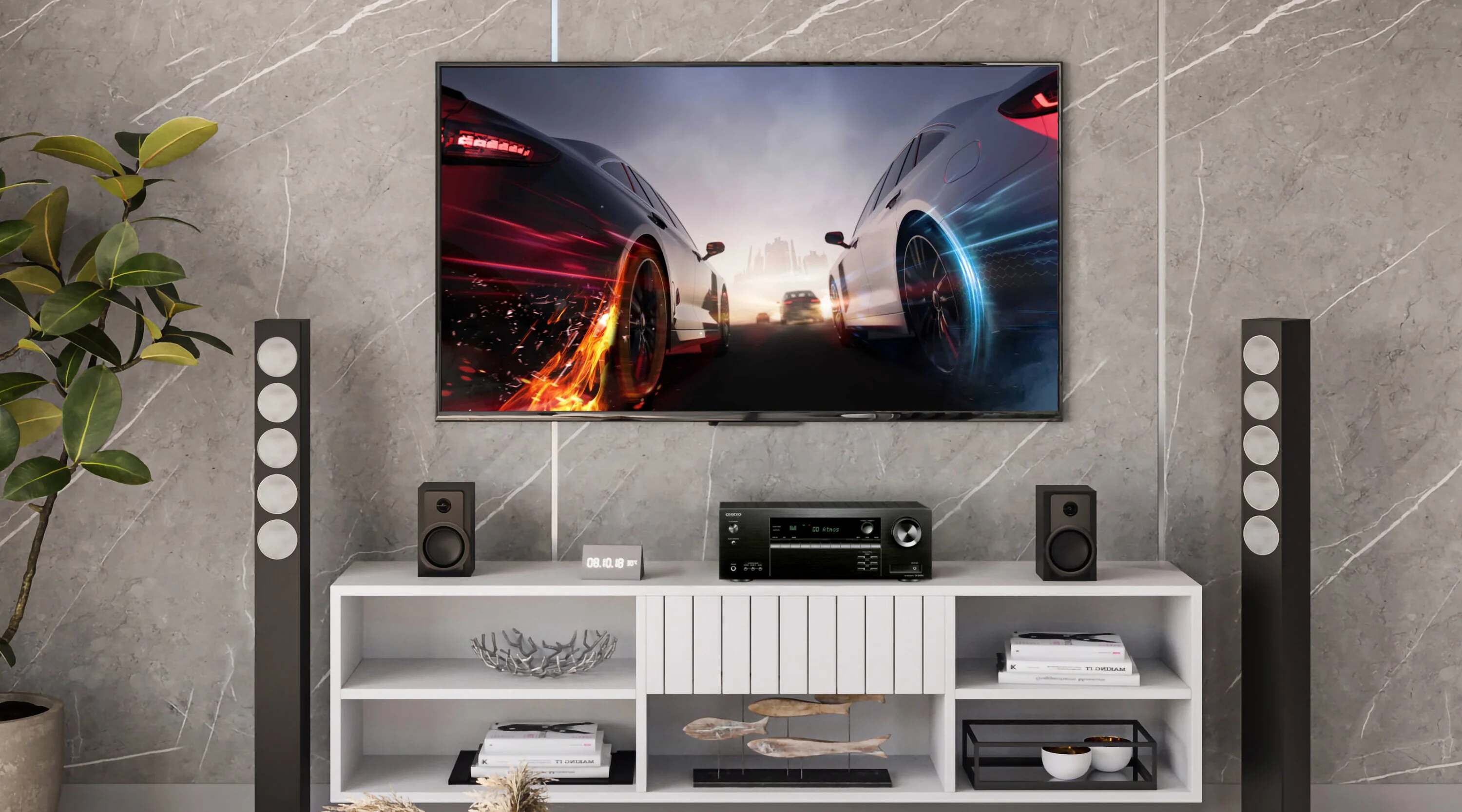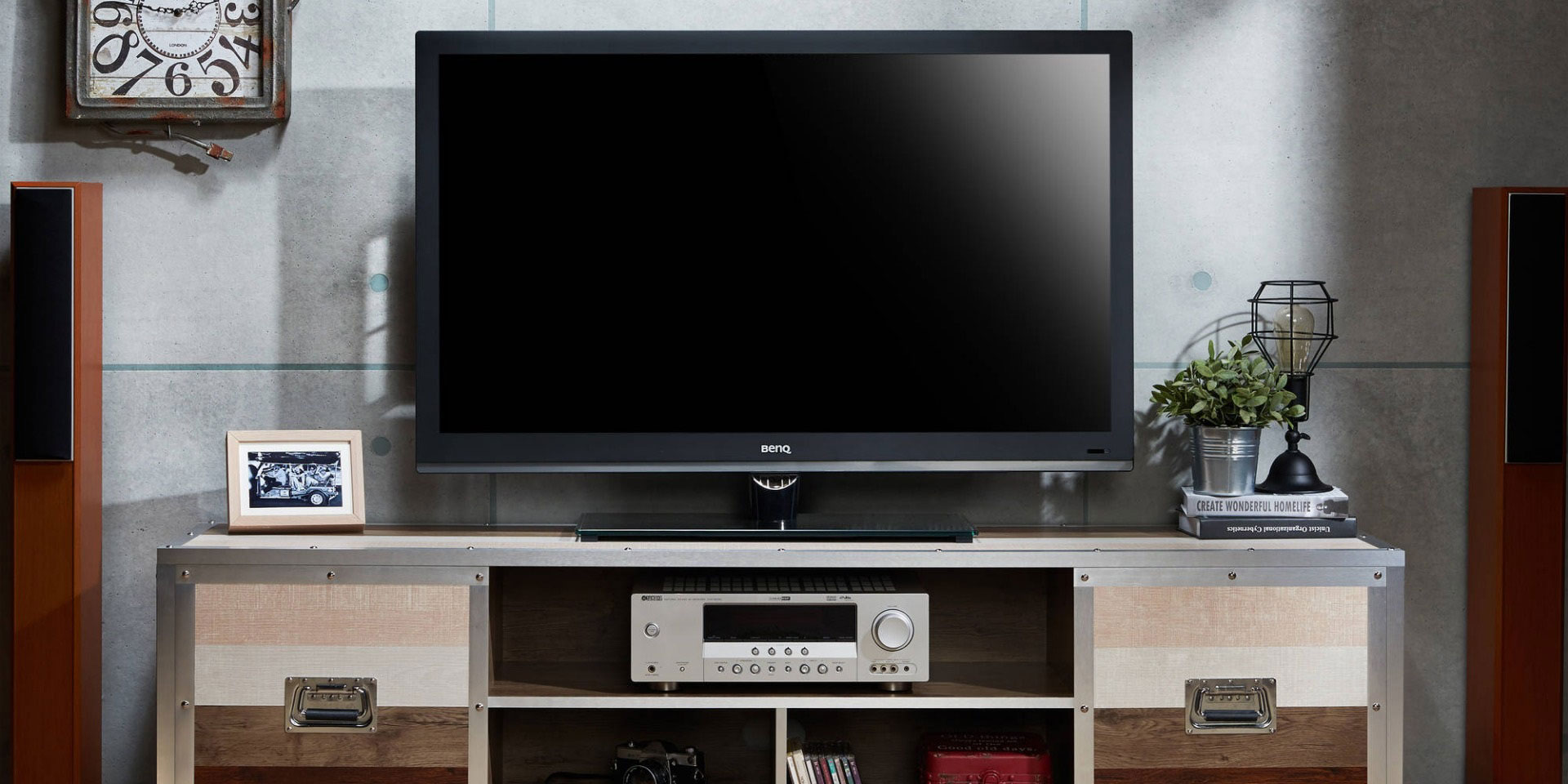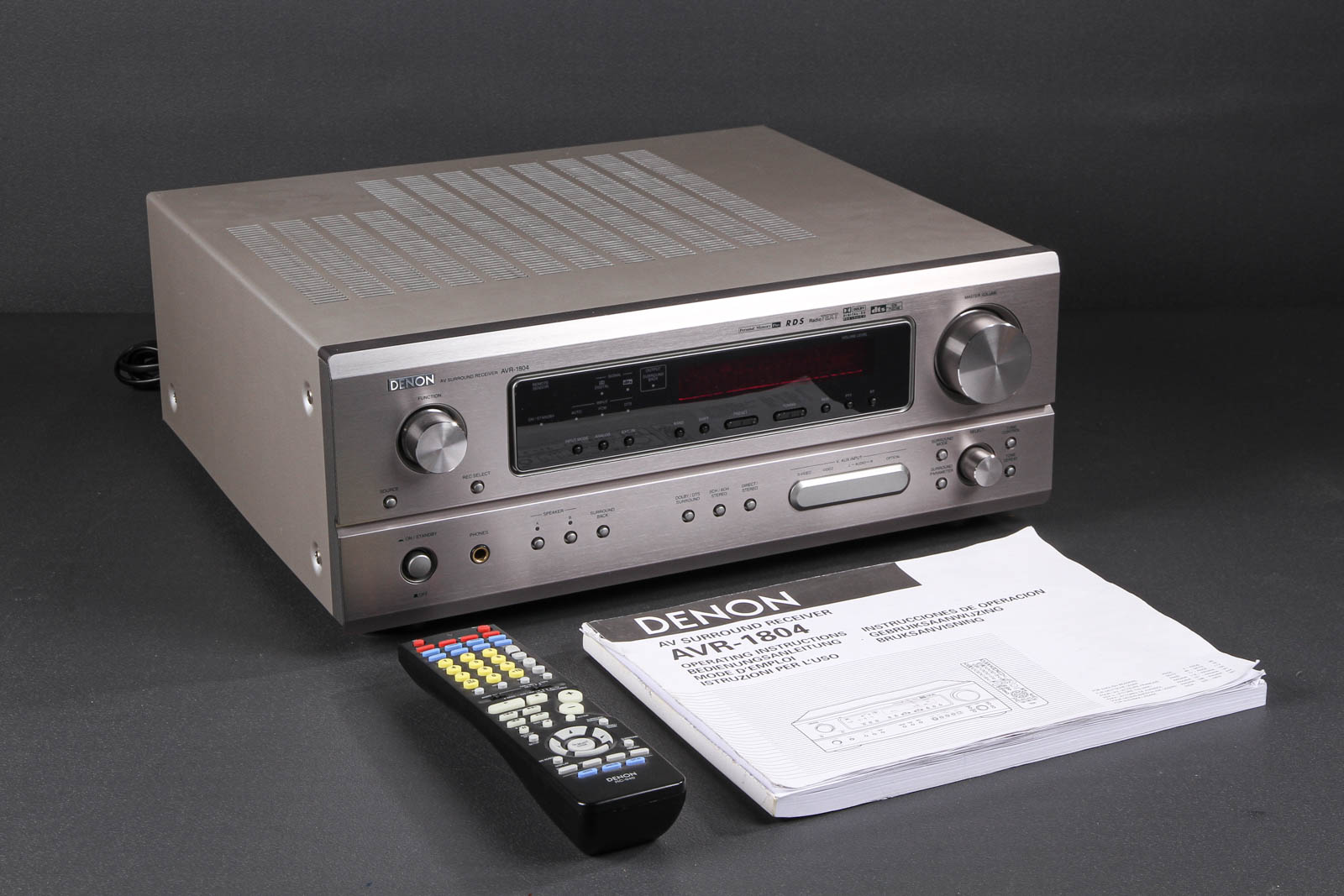Introduction
Understanding the Power of an AV Receiver
When it comes to creating an immersive home entertainment experience, the audio-visual (AV) receiver plays a pivotal role. This sophisticated piece of technology serves as the central hub for connecting various audio and video sources, amplifying sound, and processing visual signals to deliver a captivating cinematic experience within the comfort of your own home.
An AV receiver, often referred to as an audio-video receiver, is a multi-functional electronic component designed to serve as the heart of a home theater system. It seamlessly integrates audio and video signals from different sources such as Blu-ray players, gaming consoles, streaming devices, and cable boxes, and distributes them to speakers and a display device, such as a television or a projector.
This article aims to delve into the various facets of an AV receiver, shedding light on its capabilities and highlighting the crucial role it plays in elevating the entertainment experience for enthusiasts and casual users alike.
From its power output and audio and video processing capabilities to its connectivity options, multi-room and multi-zone capabilities, as well as control and customization features, an AV receiver is a powerhouse of technology that brings together the elements of a home theater system to deliver an unparalleled audio-visual feast.
Let's embark on a journey to unravel the intricacies of this technological marvel, understanding how it amplifies the impact of our favorite movies, music, and games, and transforms our living spaces into captivating entertainment hubs.
What is an AV Receiver?
An AV receiver is a central component of a home entertainment system that serves as a powerhouse for audio and video processing. It acts as a hub for connecting various audio and video sources, such as Blu-ray players, gaming consoles, media players, and cable or satellite boxes, and distributing their signals to speakers and a display device. Essentially, an AV receiver combines the functions of a preamplifier, a tuner, and a multi-channel amplifier into a single unit, streamlining the setup and operation of a home theater system.
At its core, an AV receiver amplifies audio signals to drive speakers, creating a surround sound experience that immerses the audience in a rich and dynamic audio environment. Furthermore, it processes video signals to optimize visual output, ensuring high-quality images on the connected display device, whether it’s a high-definition television or a projector.
Modern AV receivers are equipped with advanced features such as support for high-resolution audio formats, including Dolby Atmos and DTS:X, which deliver three-dimensional soundscapes, heightening the realism of audio reproduction. Additionally, many AV receivers support 4K Ultra HD video pass-through and upscaling, enabling seamless integration with the latest high-definition displays and content sources.
With built-in radio tuners, network connectivity, and streaming capabilities, AV receivers offer a versatile range of audio sources, from traditional FM/AM radio to online music services and local network media servers. This diversity of input options allows users to enjoy a wide array of audio content, tailored to their preferences and mood.
Overall, an AV receiver acts as the nerve center of a home entertainment system, orchestrating the seamless integration of audio and video components to deliver a captivating and immersive experience for movie nights, gaming sessions, and music listening alike.
Power Output
The power output of an AV receiver is a critical factor that directly influences the performance and capabilities of a home theater system. It refers to the electrical power delivered to the speakers to produce sound, measured in watts per channel. The power output specification typically includes two values: the number of channels Driven, often denoted as “x channels Driven,” and the power output per channel, expressed in watts.
For instance, a specification of “100 watts per channel, 7 channels Driven” indicates that the AV receiver can deliver 100 watts of power to each of the seven channels when all channels are simultaneously active. This specification is essential for understanding the receiver’s ability to drive speakers and reproduce audio accurately, especially in demanding scenarios such as action-packed movie scenes or orchestral music performances.
The power output of an AV receiver directly impacts its ability to deliver dynamic and impactful sound, particularly in larger rooms or with speakers that have higher power requirements. A higher power output allows the receiver to drive speakers with greater authority, resulting in a more immersive and engaging audio experience.
Moreover, the power output capability of an AV receiver influences its compatibility with different types of speakers, including bookshelf speakers, floor-standing speakers, and subwoofers. Speakers with higher power handling capabilities can fully utilize the power output of the receiver, enabling them to reach their full potential in terms of volume and fidelity.
It is important to note that while the power output specification is a crucial factor, the quality of the amplifier circuitry and the overall design of the receiver also significantly impact its performance. A well-designed AV receiver with efficient power delivery can provide a compelling audio experience even at lower power output levels, while a poorly designed receiver may struggle to deliver satisfactory performance despite high power output specifications.
In essence, the power output of an AV receiver is a key consideration for enthusiasts and casual users alike, as it directly influences the system’s ability to deliver captivating audio experiences that complement the visual spectacle of modern home entertainment.
Audio and Video Processing
Audio and video processing capabilities are integral aspects of an AV receiver, contributing to the quality and fidelity of the sound and visual output in a home entertainment setup. The audio processing functions of an AV receiver encompass a range of technologies and features aimed at optimizing the reproduction of sound, creating immersive surround soundscapes, and enhancing the overall listening experience.
One of the key audio processing technologies found in modern AV receivers is Dolby Atmos, which introduces a three-dimensional audio experience by incorporating height channels into the surround sound setup. This technology enables sound to move dynamically around the listener, creating a sense of depth and dimension that adds realism to movies, music, and games. Similarly, DTS:X is another audio processing technology that delivers immersive audio by placing sound objects in three-dimensional space, further enriching the listening environment.
Furthermore, AV receivers often feature advanced audio decoding and processing capabilities for various audio formats, including high-resolution formats such as FLAC, ALAC, and DSD, allowing users to enjoy studio-quality audio playback with exceptional clarity and detail. Additionally, built-in digital signal processing (DSP) algorithms enable the customization of sound characteristics, room acoustics correction, and the creation of virtual surround sound environments, tailoring the audio output to suit individual preferences and room configurations.
On the video processing front, AV receivers are equipped with features that optimize the visual output from connected sources to deliver stunning images on the display device. This includes support for 4K Ultra HD video pass-through and upscaling, ensuring compatibility with the latest high-definition displays and content sources. Advanced video processing technologies integrated into AV receivers enhance picture quality, reduce noise, and provide seamless video switching and scaling for a smooth and immersive viewing experience.
Moreover, the integration of high dynamic range (HDR) and wide color gamut (WCG) support in AV receivers enables the faithful reproduction of HDR-enhanced content, preserving the richness and vibrancy of colors and ensuring that the visual impact of HDR-enabled movies and shows is fully realized on compatible displays.
In essence, the audio and video processing capabilities of AV receivers play a pivotal role in delivering a captivating and immersive home entertainment experience, elevating the quality of sound and visuals to new heights and enriching the enjoyment of movies, music, and gaming.
Connectivity
The connectivity options offered by an AV receiver are instrumental in facilitating seamless integration with a diverse range of audio and video sources, as well as enabling the distribution of signals to speakers and display devices. Modern AV receivers are equipped with an array of input and output connections, catering to both traditional and contemporary audio and video devices, and providing the flexibility to accommodate various entertainment setups.
One of the fundamental connectivity features of an AV receiver is the presence of multiple HDMI inputs and outputs. HDMI (High-Definition Multimedia Interface) serves as the primary conduit for transmitting high-definition audio and video signals from sources such as Blu-ray players, gaming consoles, media players, and cable or satellite boxes to the AV receiver and, subsequently, to the display device. The ability to switch between multiple HDMI sources and support for advanced HDMI features, including 4K Ultra HD, HDR, and HDCP 2.2, ensures compatibility with the latest audio-visual technologies and content formats.
Additionally, AV receivers often incorporate analog and digital audio inputs to accommodate legacy audio equipment, turntables, CD players, and other audio sources. Optical and coaxial digital inputs enable the connection of audio devices that utilize these interfaces, offering versatility in integrating a wide range of audio components into the home entertainment system.
Furthermore, network connectivity features, such as Ethernet ports and built-in Wi-Fi, empower AV receivers with access to streaming services, internet radio, and local network media servers. This connectivity enables users to enjoy a wealth of online music content and access audio streaming platforms directly through the AV receiver, expanding the range of entertainment options available at their fingertips.
Multi-room audio capabilities, often supported by AV receivers, allow for the distribution of audio signals to different zones or rooms within a home, enabling independent playback control and creating a cohesive audio environment throughout the living space. This feature enhances the flexibility and utility of the AV receiver, allowing users to tailor their entertainment experience to specific areas or activities.
Overall, the connectivity options provided by AV receivers serve as the linchpin for creating a versatile and integrated home entertainment ecosystem, enabling the seamless interconnection of audio and video sources, and empowering users to explore a myriad of entertainment possibilities with ease and convenience.
Multi-room and Multi-zone Capabilities
Multi-room and multi-zone capabilities are compelling features of modern AV receivers, offering users the flexibility to distribute audio and, in some cases, video content to different areas or zones within a home, creating distinct entertainment environments tailored to specific preferences and activities.
Multi-room audio functionality allows users to play audio content in multiple rooms simultaneously, providing synchronized playback or independent control over the audio sources and volume levels in each room. This feature is particularly advantageous for entertaining guests, hosting gatherings, or simply creating a harmonious ambiance throughout the home. With multi-room audio capabilities, users can enjoy music, radio, or streaming content in various areas, enhancing the overall living experience.
Furthermore, AV receivers with multi-zone capabilities enable the routing of audio and, in some cases, video signals to different zones or rooms, each with its own independent source selection and volume control. This functionality empowers users to customize the entertainment experience in different areas of the home, catering to diverse preferences and activities. For instance, a multi-zone AV receiver can facilitate the simultaneous playback of a movie in the living room, music in the kitchen, and a gaming console in the entertainment area, ensuring that each zone receives tailored audio-visual content.
Some AV receivers offer the ability to assign amplifiers and audio outputs to specific zones, allowing for the creation of dedicated entertainment spaces with individualized audio setups. This level of customization enables users to optimize the audio performance in each zone, ensuring an immersive and tailored experience tailored to the unique characteristics of the space.
Moreover, the integration of wireless streaming technologies and dedicated control apps enhances the convenience and accessibility of multi-room and multi-zone capabilities, enabling users to manage and control the playback of audio content across different zones using their mobile devices or smart home interfaces. This seamless integration fosters a user-friendly and intuitive experience, allowing for effortless navigation and operation of the multi-room and multi-zone features.
In essence, the multi-room and multi-zone capabilities of AV receivers empower users to create personalized entertainment environments throughout their homes, fostering a dynamic and versatile audio-visual ecosystem that adapts to their diverse preferences and lifestyle needs.
Control and Customization Options
AV receivers offer a range of control and customization options that empower users to tailor their home entertainment experience to their preferences, seamlessly manage audio and video settings, and integrate the receiver into their smart home ecosystems. These features enhance user convenience, provide flexibility in operation, and facilitate the optimization of audio-visual performance.
One of the key control features of modern AV receivers is the integration of intuitive user interfaces, including on-screen menus and graphical user interfaces, which enable users to navigate settings, adjust audio parameters, and configure input sources with ease. These interfaces provide a visual and interactive means of controlling the receiver’s functions, simplifying the setup process and enhancing the user experience.
Many AV receivers support remote control via dedicated handheld remotes, smartphone apps, or voice commands, allowing users to manage audio and video playback, adjust volume levels, and switch between input sources from the convenience of their preferred control device. The integration of voice control technologies, such as Amazon Alexa or Google Assistant, further enhances the accessibility and hands-free operation of AV receivers, enabling users to interact with their home entertainment systems using natural language commands.
Customization options within AV receivers extend to audio settings, room calibration, and speaker configuration, enabling users to fine-tune the sound characteristics, optimize audio performance based on room acoustics, and tailor the speaker setup to suit their listening environment. Advanced room correction technologies, such as Audyssey and Dirac Live, analyze room acoustics and automatically adjust audio parameters to deliver optimal sound quality, compensating for acoustic anomalies and enhancing the overall listening experience.
Integration with smart home platforms, such as Apple HomeKit, Google Home, or Amazon Alexa, allows AV receivers to be seamlessly incorporated into broader home automation setups, enabling users to control their entertainment systems alongside other smart devices in their homes. This integration facilitates the creation of custom routines, voice-activated commands, and cross-device interactions, enhancing the interconnectedness and automation of the home entertainment experience.
Overall, the control and customization options offered by AV receivers empower users to personalize their home entertainment setups, providing intuitive control interfaces, flexible management capabilities, and seamless integration with smart home ecosystems, ultimately enhancing the accessibility, convenience, and performance of their audio-visual experiences.
Conclusion
The AV receiver stands as a technological marvel that serves as the central nerve center of a home entertainment system, orchestrating the seamless integration of audio and video components to deliver captivating and immersive experiences. From its power output and audio and video processing capabilities to its extensive connectivity, multi-room and multi-zone features, and advanced control and customization options, the AV receiver embodies the convergence of cutting-edge technology and user-centric design, elevating the way we engage with our favorite movies, music, and games within the comfort of our homes.
At the core of an AV receiver’s prowess is its ability to amplify audio signals with precision, driving speakers to create enveloping soundscapes that transport audiences into the heart of the action. The incorporation of advanced audio processing technologies, such as Dolby Atmos and DTS:X, further enhances the realism and depth of the audio experience, while the support for high-resolution audio formats ensures that every sonic detail is faithfully reproduced with exceptional clarity and fidelity.
On the visual front, AV receivers excel in processing video signals to deliver stunning images, supporting the latest 4K Ultra HD video formats, high dynamic range (HDR), and wide color gamut (WCG) content, ensuring that the visual spectacle of modern entertainment is faithfully preserved and presented with breathtaking realism.
Connectivity options provided by AV receivers enable the seamless integration of a diverse range of audio and video sources, while multi-room and multi-zone capabilities empower users to create personalized entertainment environments throughout their homes, fostering dynamic and versatile audio-visual ecosystems that adapt to their diverse preferences and lifestyle needs.
Moreover, the inclusion of advanced control and customization options, including intuitive user interfaces, remote control capabilities, voice commands, and integration with smart home platforms, enhances user convenience, provides flexibility in operation, and facilitates the optimization of audio-visual performance, ensuring that the AV receiver seamlessly integrates into modern smart home ecosystems.
In essence, the AV receiver transcends its role as a mere audio-video hub, emerging as a cornerstone of modern home entertainment, where cutting-edge technology converges with user-centric design to deliver captivating and immersive audio-visual experiences that enrich our lives and transform our living spaces into captivating entertainment hubs.










